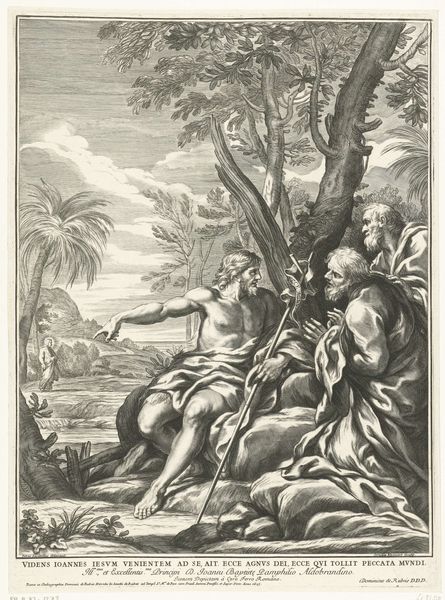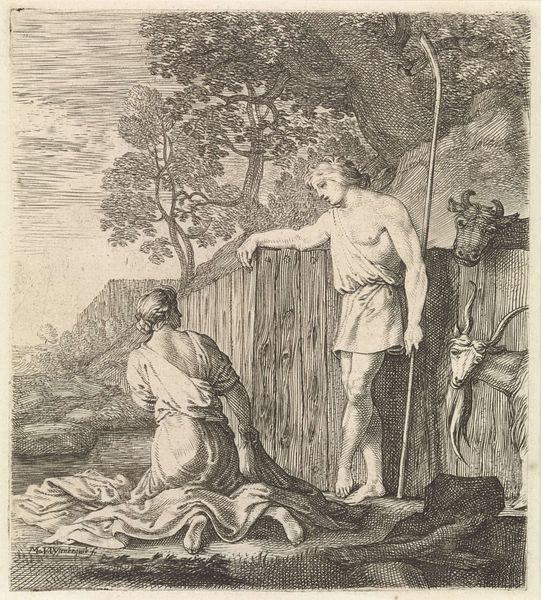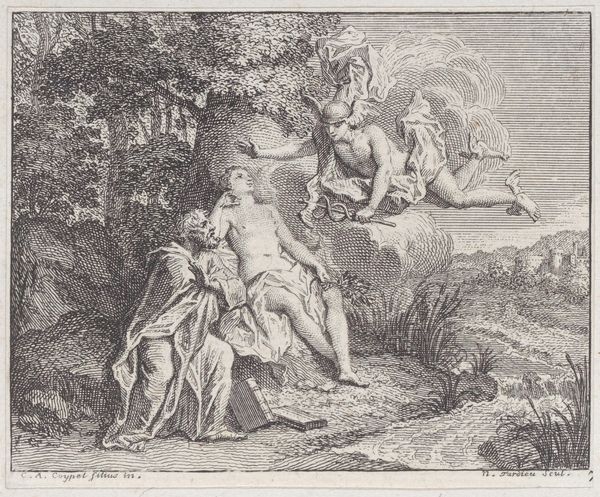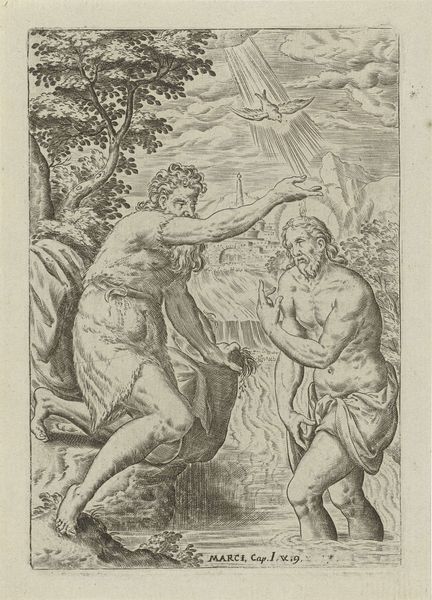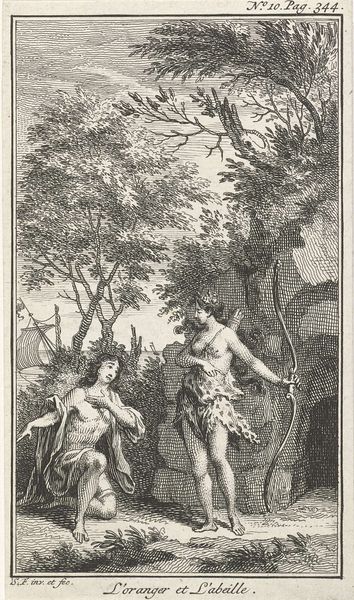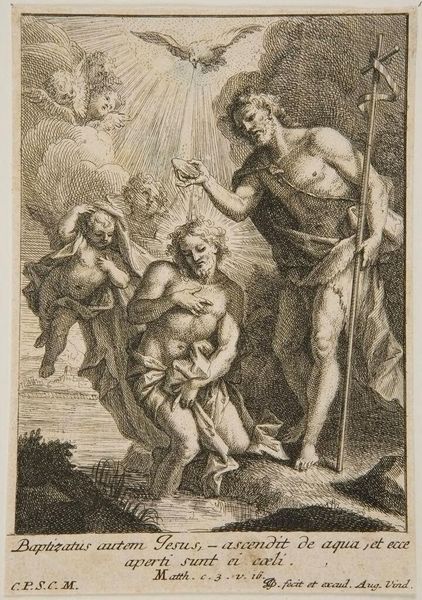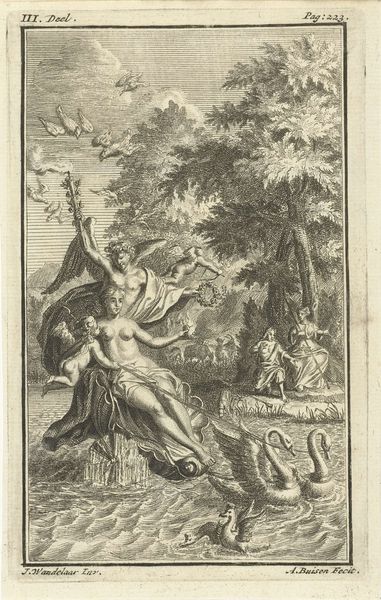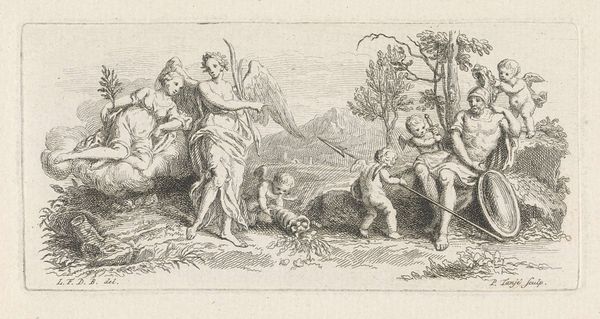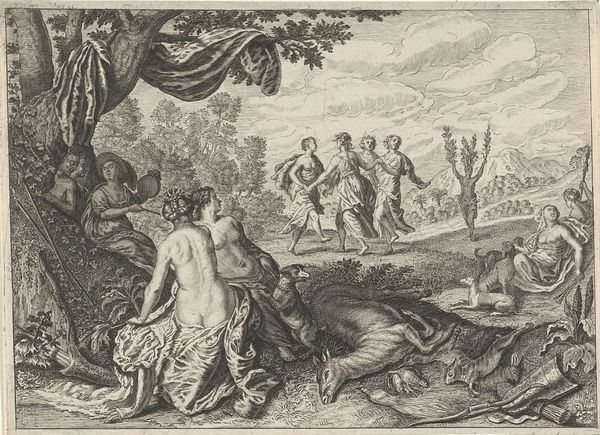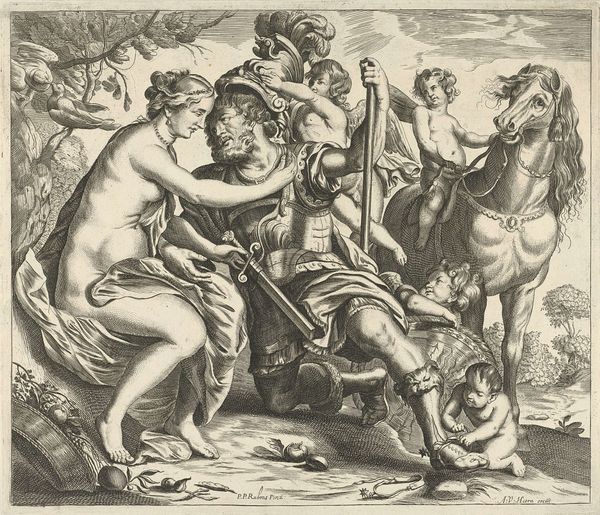
drawing, print, engraving
#
drawing
#
baroque
# print
#
landscape
#
figuration
#
genre-painting
#
engraving
Dimensions: height 100 mm, width 140 mm
Copyright: Rijks Museum: Open Domain
Curator: This is Jacob Folkema's "Dialoog tussen de herders Tityrus en Meliboeus," dating from somewhere between 1703 and 1767. The Rijksmuseum holds this particular impression of the print, an engraving that captures a moment of pastoral exchange. Editor: It immediately strikes me as classically posed but grounded in everyday pastoral life. You’ve got this dynamic exchange in the foreground and a subtle background suggesting both safety and constraint, all rendered meticulously. I am interested in its purpose and social value. Curator: The dialogue between Tityrus and Meliboeus draws directly from Virgil’s "Eclogues." Beyond a simple illustration, the image acts as a social commentary. Editor: How so? Is it referencing class, labour or land? Curator: Yes. Virgil's "Eclogues" served as thinly veiled commentaries on the political upheavals and land confiscations during his own time. Folkema is using a bucolic scene, that contrast between leisure and labor in this setting, to mirror similar societal issues perhaps present in his time. Meliboeus’s departure contrasts sharply with Tityrus’s fortunate, unearned ease under the shade. Editor: So it’s more than a decorative pastoral print; it reflects the power dynamics intrinsic in land ownership. And it's carefully engraved. Is this how this critique gained a wider audience at the time, using readily available material to critique uneven distribution? Curator: Precisely! Prints democratized access to this visual commentary. Think about who controlled the means of representation— the patronage system, the academies. This artist is perhaps speaking to those constraints through the means of making. It's a deliberate challenge. Editor: Folkema uses this conventional format to question the structures that govern life and opportunity. I am convinced. It shows the deep-rooted interplay of aesthetics, accessibility and critical insight. Curator: Indeed. By looking closely at the artistic means and how artists represent stories that are familiar in art and society, we uncover its material and social impact through these objects. Editor: It really prompts one to see the past, the labor that made that image available and in doing so think more critically about our own time and social landscape, too.
Comments
No comments
Be the first to comment and join the conversation on the ultimate creative platform.
